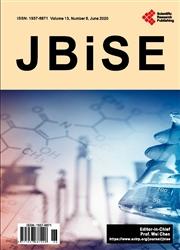Spanish Flu, SARS, MERS-CoV by CO2 Emission and Maximal Sunspot Number
引用次数: 5
Abstract
The 1918 Spanish flu, 2002 severe acute respiratory syndrome (SARS), and 2012 Middle East respiratory syndrome coronavirus (MERS-CoV) were investigated to reveal their causes and routes of transmission. They have the common features such as 1) the induction by viruses (Spanish flu; avian influenza virus (AIV), SARS and MERS-CoV; coronavirus), 2) the outbreak during the maximal sunspot number, 3) the aeolian desert dust region (Spanish flu; Saharan, SARS; Asian, MERS-CoV; Arabian), and 4) similar incubation period (AIV; 5, SARS; 2 - 7, MERS-CoV; 5 days), 5) different transmission reservoir (Spanish flu; aquatic bird/swine, SARS; bat, MERS-CoV; bat/dromedary camel). When carbon dioxide (CO2) combustion emissions were simultaneously high at the maximal sunspot number, UV radiation in the Poles was so extensive to mutate the aquatic virus through the food web to be the fundamental reason for these pandemic. Guangdong Province and Hong Kong in China are the source of 2002-2003 SARS. The stranded dead whales and dolphins along the coast of the Persian Gulf might be fed on by coastal animals in the Arabian Desert to transmit MERS-CoV. Mutations in the hot temperature in the Arabian Desert and Persian Gulf, and the maximal sunspot numbers were observed in Saudi Arabia. Saudi crude burn in power plants since 2009 with coincidental outbreaks of MERS-CoV in Saudi Arabia since 2012 peaking in 2014. The reduction of CO2 emissions by nuclear power plants is a unique solution to decrease MERS-CoV outbreaks.西班牙流感、SARS、MERS-CoV的二氧化碳排放和最大太阳黑子数
对1918年西班牙流感、2002年严重急性呼吸综合征(SARS)和2012年中东呼吸综合征冠状病毒(MERS-CoV)进行了调查,以揭示其原因和传播途径。它们具有共同的特征,如1)由病毒(西班牙流感、禽流感病毒(AIV)、SARS和MERS-CoV)诱导;冠状病毒),2)最大太阳黑子数期间的爆发,3)风成沙漠尘埃区(西班牙流感;撒哈拉,SARS;亚洲,MERS-CoV;阿拉伯),以及4)相似的潜伏期(AIV;5,SARS;2-7,MERS-CoV;5天),5)不同的传播库(西班牙流感,水禽/猪,SARS;蝙蝠,MERS-冠状病毒;蝙蝠/单峰骆驼)。当二氧化碳(CO2)燃烧排放同时达到最大太阳黑子数时,波兰人的紫外线辐射非常广泛,通过食物网使水生病毒发生变异,这是导致这些流行病的根本原因。中国广东省和香港是2002-2003年SARS的源头。波斯湾沿岸搁浅的死鲸和海豚可能被阿拉伯沙漠的沿海动物喂养,传播MERS-CoV。在沙特阿拉伯观察到阿拉伯沙漠和波斯湾的高温变化,以及最大的太阳黑子数量。自2009年以来,沙特原油在发电厂燃烧,自2012年以来,沙特阿拉伯爆发的MERS-CoV在2014年达到峰值。减少核电站的二氧化碳排放是减少MERS-CoV爆发的独特解决方案。
本文章由计算机程序翻译,如有差异,请以英文原文为准。
求助全文
约1分钟内获得全文
求助全文

 求助内容:
求助内容: 应助结果提醒方式:
应助结果提醒方式:


